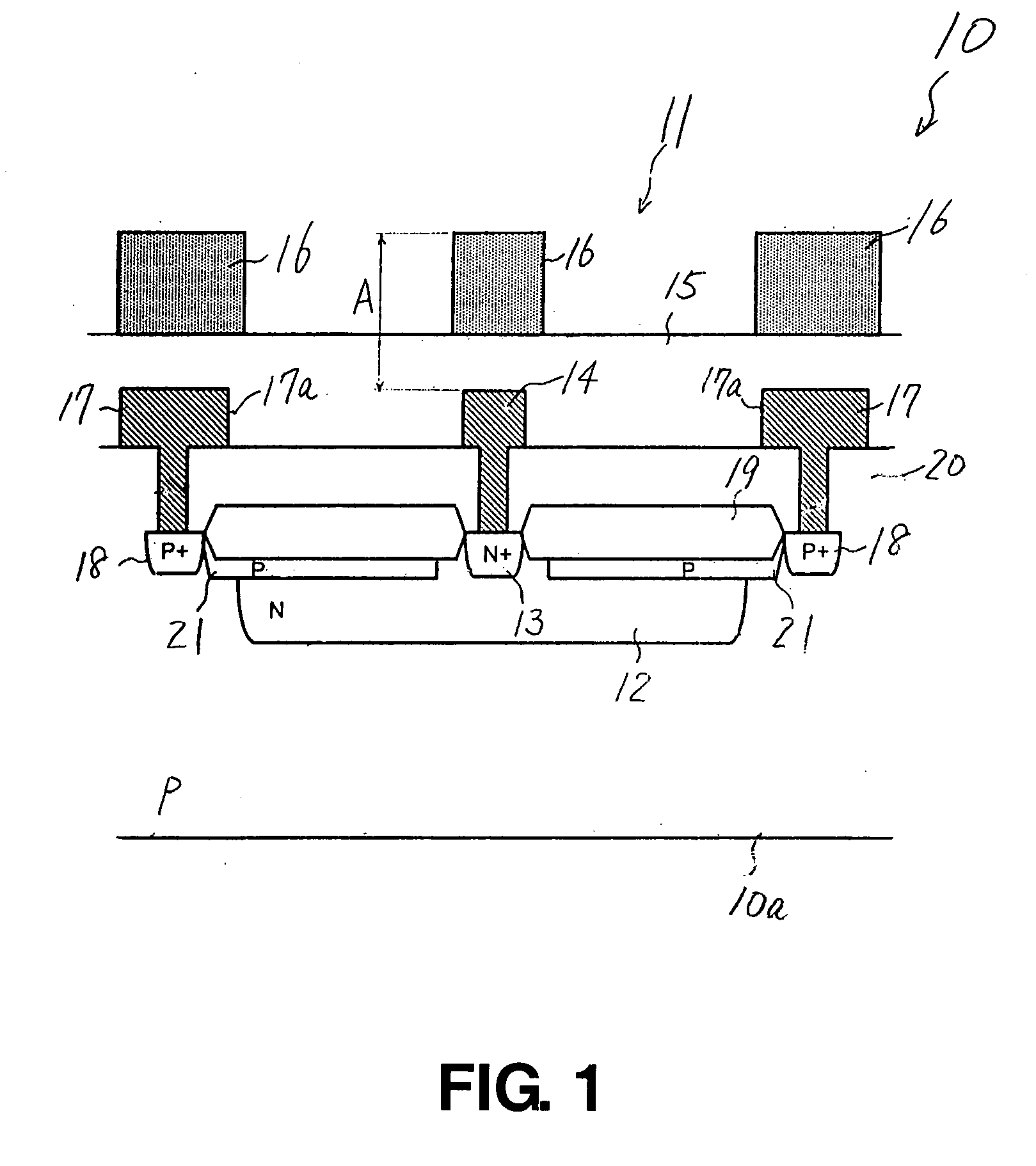Photoelectric conversion device and image sensor
- Summary
- Abstract
- Description
- Claims
- Application Information
AI Technical Summary
Benefits of technology
Problems solved by technology
Method used
Image
Examples
Embodiment Construction
[0015] Hereinafter, an embodiment of the present invention will be described with reference to FIG. 1. A photoelectric conversion device 10 according to this embodiment includes a first conductivity type semiconductor substrate (first semiconductor region) 10a, a second conductivity type semiconductor region (second semiconductor region) 12 provided in a pixel region 11 of the semiconductor substrate 10a, for storing a signal charge, interconnecting portions 13 and 14 for connecting the semiconductor region 12 with a circuit element (not shown) provided outside the pixel region 11, and an organic film 16 provided above a portion of the interconnecting portions 13 and 14 located in the pixel region 11 through an insulating protective film 15.
[0016] In the example shown in FIG. 1, the semiconductor substrate 10a is set as a P-type region and the semiconductor region 12 is set as an N-type region. A light-shielding layer 17 is provided on a surface side of the semiconductor substrate ...
PUM
 Login to View More
Login to View More Abstract
Description
Claims
Application Information
 Login to View More
Login to View More - R&D
- Intellectual Property
- Life Sciences
- Materials
- Tech Scout
- Unparalleled Data Quality
- Higher Quality Content
- 60% Fewer Hallucinations
Browse by: Latest US Patents, China's latest patents, Technical Efficacy Thesaurus, Application Domain, Technology Topic, Popular Technical Reports.
© 2025 PatSnap. All rights reserved.Legal|Privacy policy|Modern Slavery Act Transparency Statement|Sitemap|About US| Contact US: help@patsnap.com


